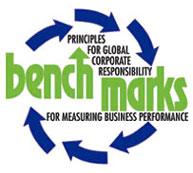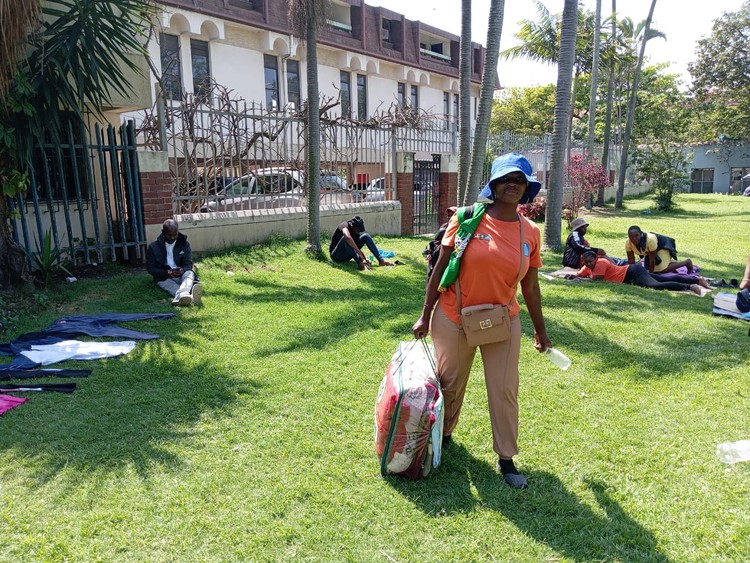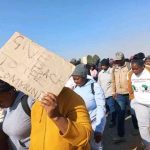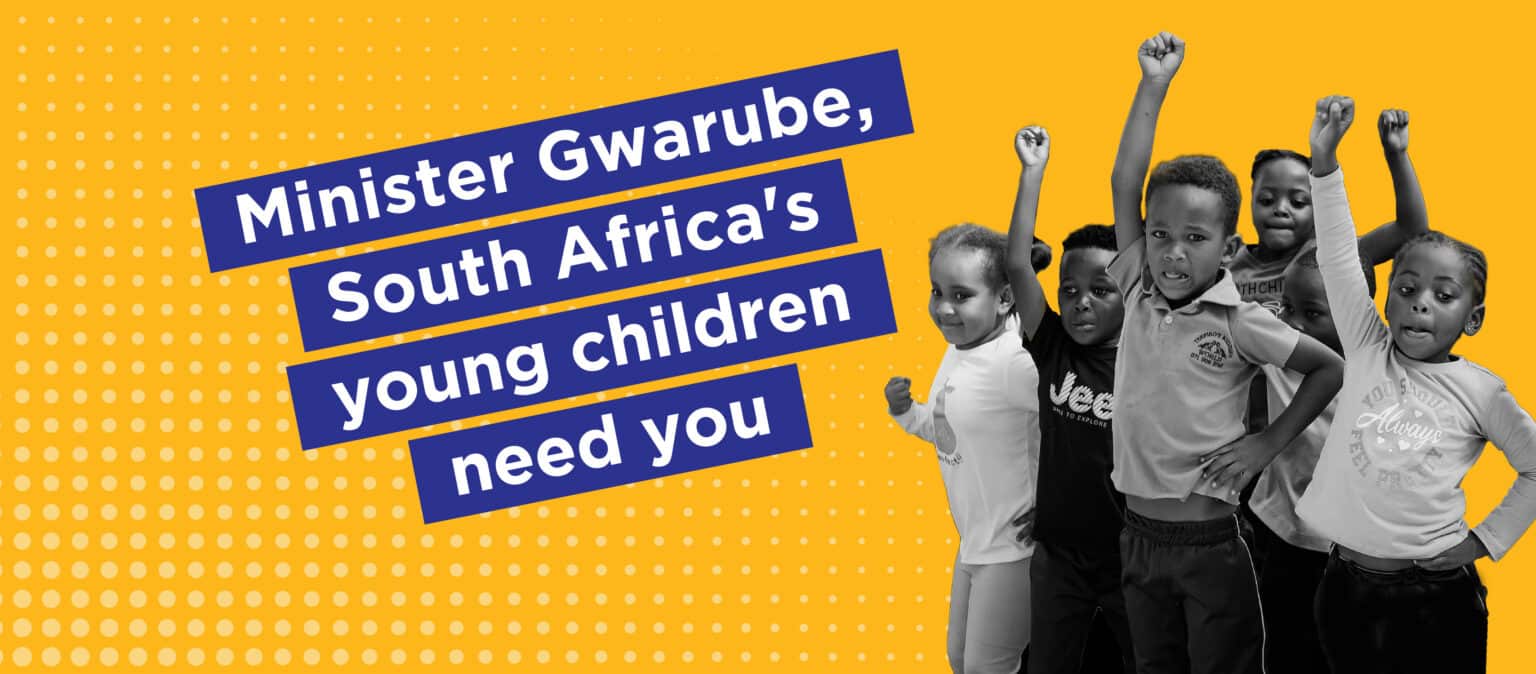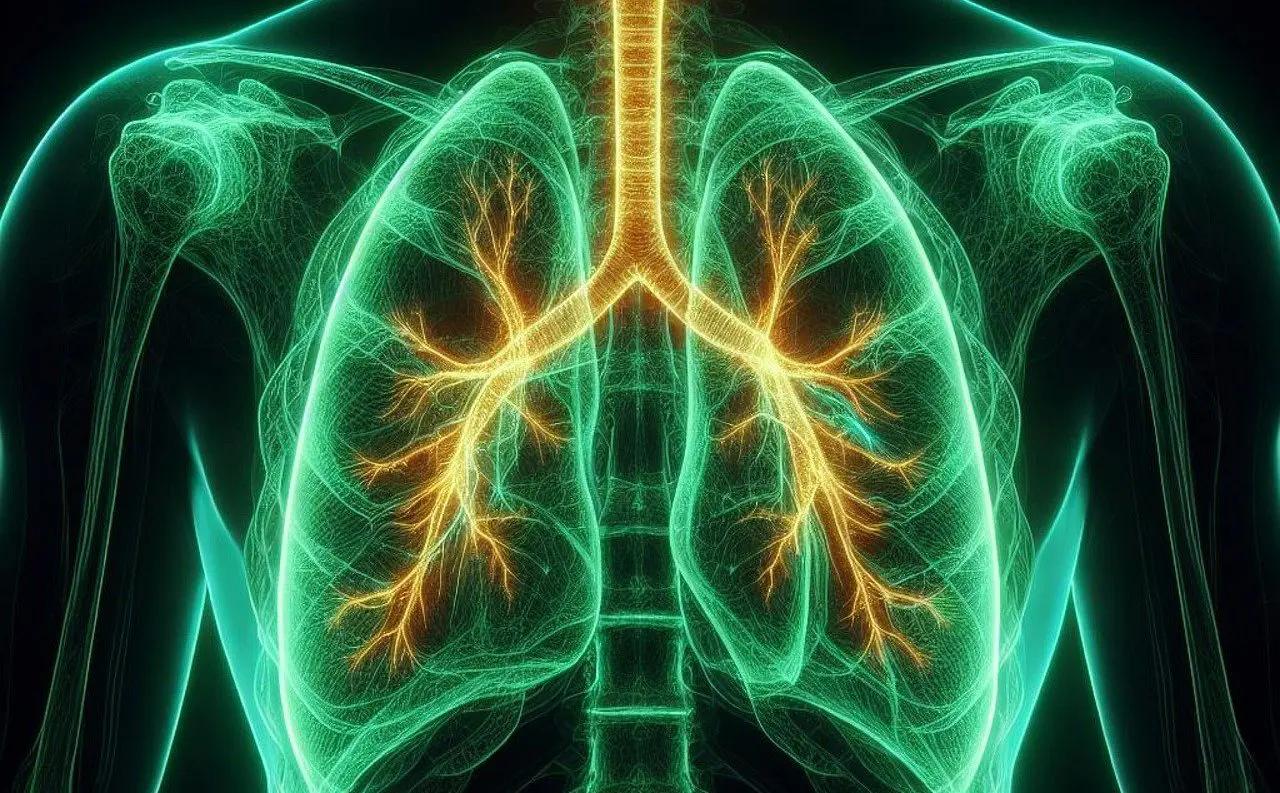Is some mining more illegal than others?
#2
Dear Hassen, this edition focuses on artisanal mining or Zama Zama, in the face of police shooting in the North West Province of about eight human beings whom the newspapers described as illegal miners. Artisanal mining has been studied over the past decade but its legal status and contribution to the formal “economy” has been unexamined.
The ANC leader in Klerksdorp, Khaya Ndincede was quoted as saying that illegal mining was a problem to the region. He further accused them of terrorising people in the township and of criminality. In 2015, the South African Human Rights Commission released the Report of the SAHRC Investigative Hearing – Issues and Challenges in relation to Unregulated Artisanal Underground and Surface Mining Activities in South Africa.
This valuable report sought, amongst others, to investigate the value chain attached to Zama Zamas. The SAHRC recommended that:
“…further studies be undertaken to trace the value chain that involves illegally mined precious metals. There is a very thin line between legal and illegal when it comes to moving, processing and selling illegally mined gold. The Commission has heard that Zama Zamas are sometimes approached to collude with legal operations (including by mining license holders and refineries) in order for the illegally mined product to be moved – including beyond South Africa’s borders – in a manner that enables tax evasion.
There is a need for formal research to be undertaken to trace whom the illegally mined precious metals are sold to and how they are moved within and outside of the country.”
The Bench Marks Foundation convened webinar for 19 October 2021 will deal with this thorny issue. It will involve many of the key organisations and institutions, including the Department of Mineral Resources and Energy (DMRE), International Labour Research and Information Group (ILRIG), Legal Resources Centre (LRC), National Association of Artisanal Miners (NAAM), the Bench Marks Foundation (BMF) and a frontline worker.
Undoubtedly the big story in this edition is the relocations in the Mogalakwena area. This neatly links up with the stories of two other relocated communities: Madithokwa community, as well as the work of the Chiadzwa Community Development Trust from Zimbabwe, which works with communities that were forced to relocate and make place for mining.
About the Limpopo area of Mogalakwena, the Business Day editorial (29 July 2021) described it as “one of the biggest challenges Amplats faces in its future as it moves closer to an expansion of the Mogalakwena mine in a project that could cost up to R23bn. Get it wrong and the outcome is very serious and will haunt the company for years to come.”
The pro-business newspaper basically called for action, not words, from the mining bosses as “the history of mining in South Africa” and the “neighbouring states have a history with mining, it is not one covered in glory”. They also warn the corporation that “human rights groups and NGOs will watch for the slightest misstep and scream blue murder if they see one.” We are watching and the communities are organizing.
By Hassen Lorgat
Photo credit: GroundUp
POINT OF VIEW
ZAMA ZAMAS: CRIMINAL ELEMENT COMES WITH THE SYNDICATED BUYERS
Nine years on and no justice for the victims.
We work with Zamas every week. There are 6000 abandoned, derelict and ownerless mines in South Africa. Abandoned by large multinational corporations. On these abandoned mines there are some 34 000 artisanal miners searching for the crumbs left by the big corporations. At a dependency ratio of 1 to 8 there are between 250 to 300 thousand people depending on their income to pay school fees, buy uniforms and stationery, meals, pay rent, etc. If these miners stop mining some of the alternatives would be to rob your house, hijack your car and become involved in real crime.
Besides that, there are ghost workers recruited by mine management and contractors that are brought to South Africa under the pretence that they are coming to work formally in licensed operating mines. These workers are not unionized, they earn 50 percent less than formally employed workers and have no pensions, Unemployed insurance fund (UIF) or medical Aid benefits. In other words, these ghost workers are super exploited slave labour. The bosses and government, while denying their existence, are in fact well aware of them.
The criminal element comes with the syndicated buyers, who live not in squatter camps but in wealthy suburbs such as Sandton. The syndicated buyers are often also mine security and private security companies. The police are alleged to be involved in syndicated buying. When the artisanal miners or Zama Zamas refuse to sell gold to these criminal outfits, they can get shot. Often these security companies rent out old mine sites to their preferred Zamas, when the miners refuse to sell below market value, they get executed. The mine bosses control the media and therefore dominate the narrative which then criminalizes the victims of the same industry.
By David van Wyk
ARTICLES
MADITLHOKWA COMMUNITY DEMAND ACTION
Dear Honourable President and Ministers copied
We, the community of Maditlhokwa, near Marikana in the North West Province, want you to investigate the intolerable situation we find ourselves in. The impacts of the Tharisa mine on our community well-being, our health and safety, housing, as well as our human dignity – undermines our constitutional rights as citizens of our country.
The Mine operation in Maditlhokwa commenced in 2011. The community where the mine is now located was removed / relocated to where Maditlhokwa is now. The farm workers were relocated into brick houses, whilst the rest of the community – the majority – was relocated into zinc shacks.
In return, the farmer “bought” a new farm in another location. Those of our community who did not have documents, were not provided with any housing or accommodation and were left stranded.
The houses provided by the mining company are of a generally poor quality. The houses do not have foundations and are constructed on top of concrete slabs. Some are brick, the majority are zinc and more recently from concrete slabs (generally known as Stop Nonsense) usually used in perimeter fencing. The roofing is poor quality and residents complain that the wind blows the sheets up and that the roofs leak and during storms, the lightning can be seen from inside the houses through the roofs. The houses are not earthed and therefore pose a major lightening risk.
We repeat Mr President, our constitutional rights – rights to housing, to health and the rights of children – all have been violated”.
The letter was written by the Bench Marks Foundation after meeting with the community and it lists a number of grievances known to many mining communities. These include:
– The lies and vague promises made by the mining company, as well as the political parties supporting the relocation, undermines the principles and practice of participatory democracy
– The community suffers dust pollution due to the blasting as well as noise pollution and poor health and safety as a result of living in cracked houses.
– The water is of poor quality and is inconsistently delivered
– The misalignment of the Social Labour Plans with the IDPs of the Bojanala District.
– Communities being divided by the company, through paying a stipend of about R2 500 to so-called “task team” or “monitors. The community believes that task teams often act as company “enforcers” and violently subdue critics of the mine.
– Communications with the mine and local political representatives are erratic and infrequent. This includes the poor communications with local councillors (the last one being a member of the EFF) and the irregular and unscheduled meetings. These practices disempower communities and allow favouritism to thrive – dividing communities.
– The health impacts on the community are many with a high prevalence of Cerebral Palsy amongst children, as well as a disproportionate number of children experiencing eye problems. Other illnesses include asthma, sinuses, TB and diarrhea as well as a high incidence of skin problems such as eczema, itchiness, flaky skin, sores / rashes.
Community members told the Bench Marks Foundation that mining takes place close to communities and that “when the platinum price was low, they blasted once a day. Now that the price is at record highs, they blast three or more times a day.
We get no notification when blasts will happen, there is only a siren that goes off on the mine site. We have also had rocks falling on our homes.
Those of us from the South West are evacuated to a hilltop every time the mine blasts.
People are compensated R 305.88 per month in Thabaneng (R156,000.00 divided by 85 households over six months) for evacuation during blasting.”
The community calls on the president and the honourable ministers to hear their plea as the situation in Raditlhokwa is volatile and desperate.
CORPORATE REMOVALS: 1 000 HOUSEHOLDS UNDER THREAT OF RELOCATION
During August 2021, Anglo American Platinum announced at a meeting that they intend to resettle two communities in the Skimming-Leruleng area of Limpopo due to the expansion of operations at their Mogalakwena Mine.
During 2019, Anglo made news for all the wrong reasons. It was taken to court by the community and ActionAid South Africa. Skimming area, like most mining communities in this region, is located next to mine and with it the accompanying problems of high dust levels from the mine dunes, blasting and high levels of noise. The Sowetan wrote that:
“A social audit baseline report conducted by Action Aid in 10 mining-affected communities including Mapela found that the Mogalakwena mine failed to comply with regulations relating to health and safety.
However, the Mapela Traditional Council has since 2015 granted at least 100 people certificates of permission to occupy a piece of land closer to the mine. Some like Kekana have already built houses but many have only secured their stands by erecting shacks with the hope of moving there at some stage.
However, Anglo wants the court to order the residents to vacate the area and the traditional council to stop authorising the allocation of stands.”
The residents party to the case are cited as “the unlawful occupiers of Zwartfontein 818.”
Fast forward to 2021 and it seems that they entered a new phase as the Business Day reported “Anglo American Platinum (Amplats) is about to embark on one of the riskiest aspects of mining in SA by relocating communities near its Mogalakwena mine as it prepares to launch an expansion at its most profitable asset.
Amplats, one of the world’s largest suppliers of platinum group metals (PGMs), is undertaking studies to expand the mine by up to 600,000oz of PGMs, taking it to nearly 2-million ounces a year…
In an editorial, the BD editorial already quoted above, correctly observed that:
“Amplats already has the experience of angry community members from two earlier moves of 706 households in early 2000 and 957 more in a programme that started in 2005. As recently as 2015 there was violent unrest near Mogalakwena by aggrieved community members complaining Amplats was not living up to its pre-location promises.
Amplats maintained it had lived up to its commitments.”
At the outset, the Foundation was concerned about what this would mean for these two mining communities as the track record of mining upon people has been dismal.
A spokesperson for the Bench Marks Foundation pointed that “we do not represent communities and communities must be in the frontline of decision-making that impacts on their lives. In addition, the principles of Free, Prior and Informed Consent must be lived in practice and not merely a slogan. In the meantime, the BMF will dispatch two community organisations to get the views of the community on these relocations.”
According to Anglo, the Mogalakwena operations are moving westwards towards Skimming-Leruleng, which consists of about 1,000 households. These they call relocations which they said will “extend the life of the mine and enable the operation to reach its full potential.”
The first relocations of communities is said to start in 2027 and to be completed in 2028. While the corporation has set up a Resettlement Working Group, the questions of its autonomy and access to resources will remain open. These communities must be informed and engage urgently with other communities about what to expect.
Corporations, as Anglo has done, said they are committed to international standards but the proof of the pudding is in the eating. Communities over the years have learnt that when a mine comes or seeks an extension to mining – livelihoods and the environment suffer. Communities must regard this as an early warning notice and start organising.
Over the years communities have learnt ways and means of fighting for justice:
Find ways to avoid community divisions and counter corporate divide-and rule tactics. Use this time to bring in chiefs and other traditional leaders to work alongside the people and not for their own narrow self-interests. Find ways as communities to ensure that those assigned by the Corporation to engage with them work in a democratic, transparent and accountable way. Often these company appointed groups do not engage in a manner that is open and beneficial to the communities. Communities have the right to obtain copies of these forms as some of them may include “consent forms”. When unsure, talk to others and even lawyers. What is critical is for communities to document the processes independently as well. All documents given must be secured for future struggles including legal actions. What is important is that the local community is united and democratic and, at the same time, seeks support from other networks and NGOs who have worked in this field for years. The communities must speak with one voice on what their communities and the environment demands. Preserve our health, our water supplies and our livelihoods.If the corporation wants to relocate communities without the consent of the people, without adhering to FPIC and the right to say NO, then conflict will be the result.
Watch this space.
Hassen Lorgat and Jeremy Daphne, worked on this article
THE MEET – UP
A meeting place to learn about organisations, networks, movements and people resisting injustices and whom we work with.
We firstly introduce you to the newest Board member of the Bench Marks Foundation: ASANDA BENYA. Asanda is a scholar activist who has done extensive work on gender and mining. She teaches at the University of Cape Town. Here in this image, courtesy of the Review of African Political Economy, we see the comrade in action!! Read More
In the feature article, Benya wrote:
Drawing from my field notes (Thursday 30 August 2012) below I take you through a typical day at work, and how we navigated spaces in mining.My alarm rings, it is 3h30 in the morning. I’ve hardly slept and I’m as tired as I was when I went to bed last night. I get very anxious at night; I worry about being late and missing the cage, I think about accidents, what if something happens while we go down the cage, what if rocks fall while we’re inside the stope, what if we don’t meet production targets and my team does not get bonuses, what if I cause an accident with the winch, what if, what if… I get out of bed, get ready for work and leave my room to the kitchen block… It’s now 4h20 and outside it’s 5 degrees Celsius. I’m supposed to be underground by 5h15, if I don’t leave soon I’m going to miss my cage and be late for work… At least I’m no longer working on the levels that have to be underground by 4h15am as I did in June and July, the coldest months in Rustenburg. I leave the residence and I pass through the town of Rustenburg at 4h40. Around the taxi rank it is buzzing with activities, the women hawkers who target mine workers are already here selling food and warm beverages. After passing town I join a township which links me to the shaft, along the road are a number of men and women mine-workers hitch hiking.
For more information on this excellent work, click here.
In 2016 l joined CHIADZA COMMUNITY DEVELOPMENT TRUST as a concerned environmental community monitor. Diamond mining was expanding and the government which should have been protecting, promoting and enforcing human rights in the face of extractives has become the major perpetrator. They mined without carrying out the EIA process.
As a trained journalist l started writing on our situation. Miners were discharging raw sewage and slims into Zimbabwe’s two major rivers. Save and Odzi Rivers. Communities developed skin diseases, lost their cattle after drinking polluted water. Some community members were relocated without compensation. We draw the attention of the Zimbabwe Environmental Law Association. They supported us with capacity building workshops. We get training on business and human rights but the support was not enough until Bobby Marie, an official from Bench Marks Foundation, got our community voices linked up with the Tunatazama and the Monitors Programme.
We participated fully from the start. The stories we wrote featured in the Monitors magazine. As we got better organised, we began to see results in how we engaged the company.
Our stories Diamond Clinic Neglected and another Diamond is about how a community was forced to buy water from the Zimbabwe National Army at a cost of USD$1 per 20 litre bucket. (Tunatazama 2018). The clinic has since been repaired and a borehole drilled by the mining company.
As CCDT programs officer, August 2020 had been benefiting from the Benchmarks strategies and approaches. The slogan “Organise Change is Coming” motivated us and had organised youths who are advocating for environmental child rights following the death of children after falling in unclaimed pits left by the mine.
Community and Extractivism, Diamond mining is expanding into villages where communities do farming , taking away their virgin farms and as a result the diamond mining community is dependent on donors and NGOs.
There is blasting and the villagers and their cattles are required to temporarily vacate their houses to nearby school each time mine needs to blast. The mining officials said they will only compensate reported cases of property damaged during blasting. This totally is a violation.
The Chinese corporations are mining without Environmental Impact Assessments (EIAs) being done; but the environmental officials are doing nothing to hold them accountable. We once staged peaceful demonstrations and empty promises were made to silence the aggrieved community. Mine officials set dogs on artisanal miners and the children.
Some children from the diamond mining area are walking 10 kilometres to and from school following the relocation of the school. This had impacted on the right to education.
We have learned that monitoring the abuses of corporations and government neglect is not an event but a continuous process. That business and human rights violation is now a global issue and peace can only be achieved through collaborations.
The need for African states to domesticate and implement regional and international frameworks and best practices on business and human rights. We have also learnt that if mining communities organise themselves and address the economic, social, cultural and environmental challenges emerging out of extractivism we can hope for a better Zimbabwe, Southern Africa and Africa..
By Josphat Makaza Programmes Officer [josphatmakaza@gmail.com]
UPCOMING EVENTS
19 OCTOBER, 10AM-NOON: Artisanal Mining Policy Webinar with Opening Remarks by Bishop Jo Seoka (BMF, Board Chairman) and David van Wyk (BMF Lead Researcher) as presenter. Respondents: Lauren Nel (Legal Resources Centre), Dr. Thabo Mokoena (DMRE, Director General) – TBC, Zethu Hlatshwayo (National Association of Artisanal Miners) and Laurence Mazwai (Rock-face Operator). A webinar moderated by Dr. Dale McKinley (ILRIG, Researcher). To register, visit the registration link.
20 OCTOBER: Bench Marks Foundation AGM 20 October 2021 will include the address by the Bishop Jo Seoka- Chairperson of the Bench Marks Foundation as well as the presentation of the Annual Report (2020/21) by Mr John Capel – Executive Director. The 2020 Audited Financial Statements will be presented by Mr Allan Wentzel – Deputy Chairperson for consideration of the members. The final item before closure will be the confirmation of the board members for the coming year.
USEFUL RESOURCES
Comments on the Draft National Mine Closure Strategy, 2021 (“draft Closure Strategy”) presented by the Department of Mineral Resources and Energy (“the Department”)
– The Bench Marks Foundation, ILRIG and LRC have made a joint submission and it can be found here: https://www.bench-marks.org.za/submissions/
– The Centre for Applied Legal Studies submission (“CALS”) can be obtained by writing to Robert.Krause@wits.ac.za
Thanks to the BMF Newsletter and Podcast Team who supported the production of this newsletter, Simo Gumede, Moses Cloete, John Capel and Hassen Lorgat. Special thanks to Marta Garrich who assisted beyond the call of duty.

